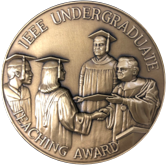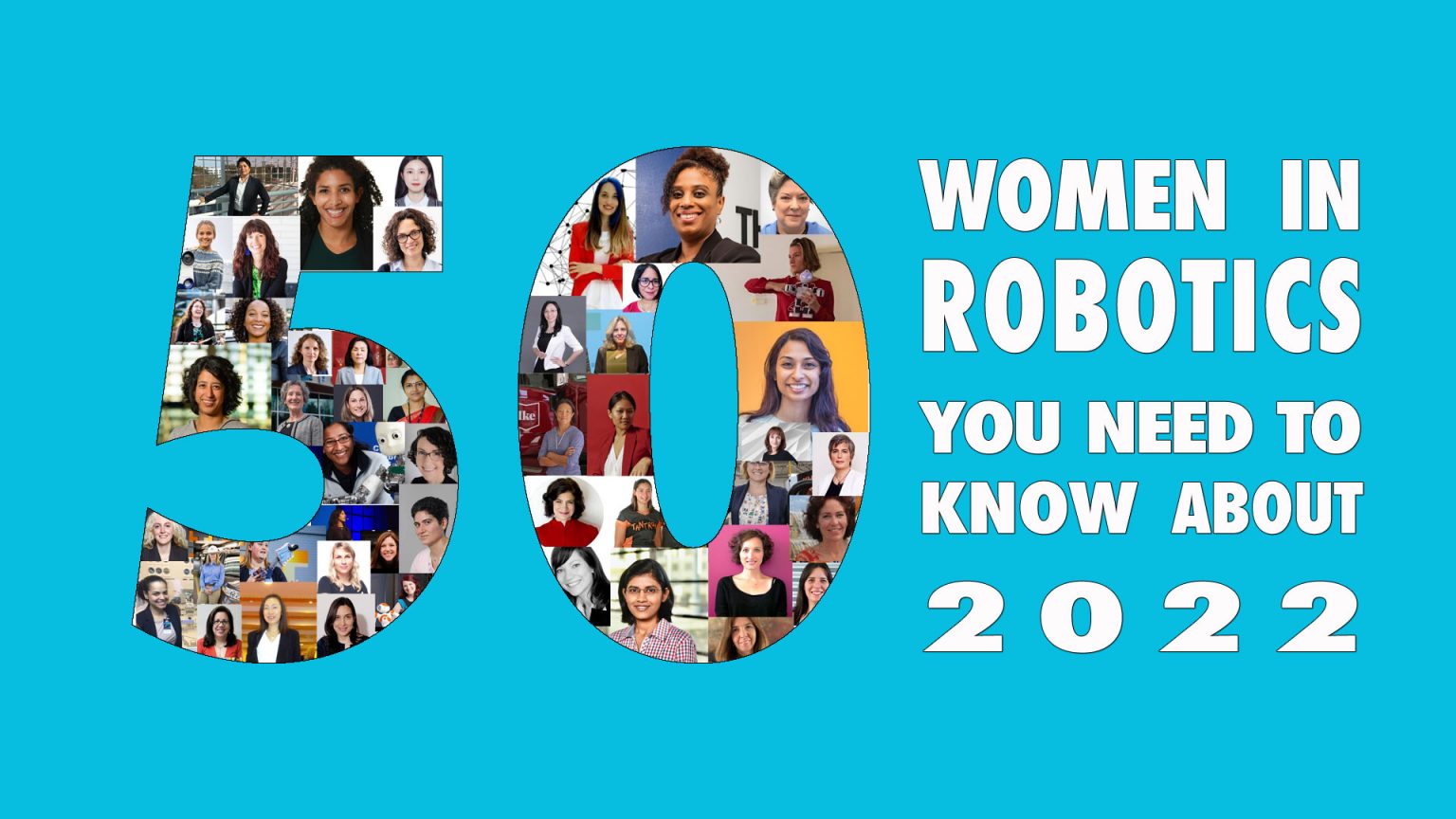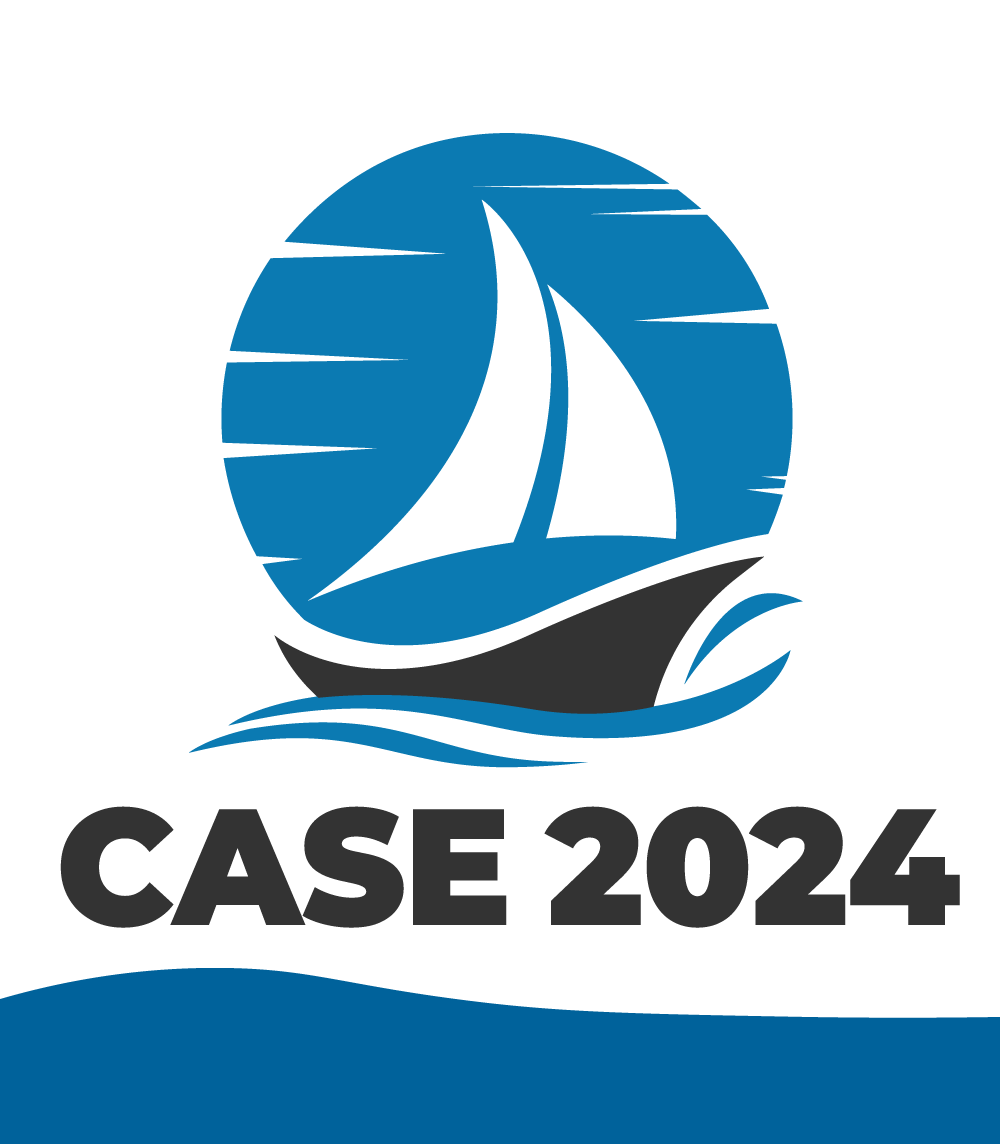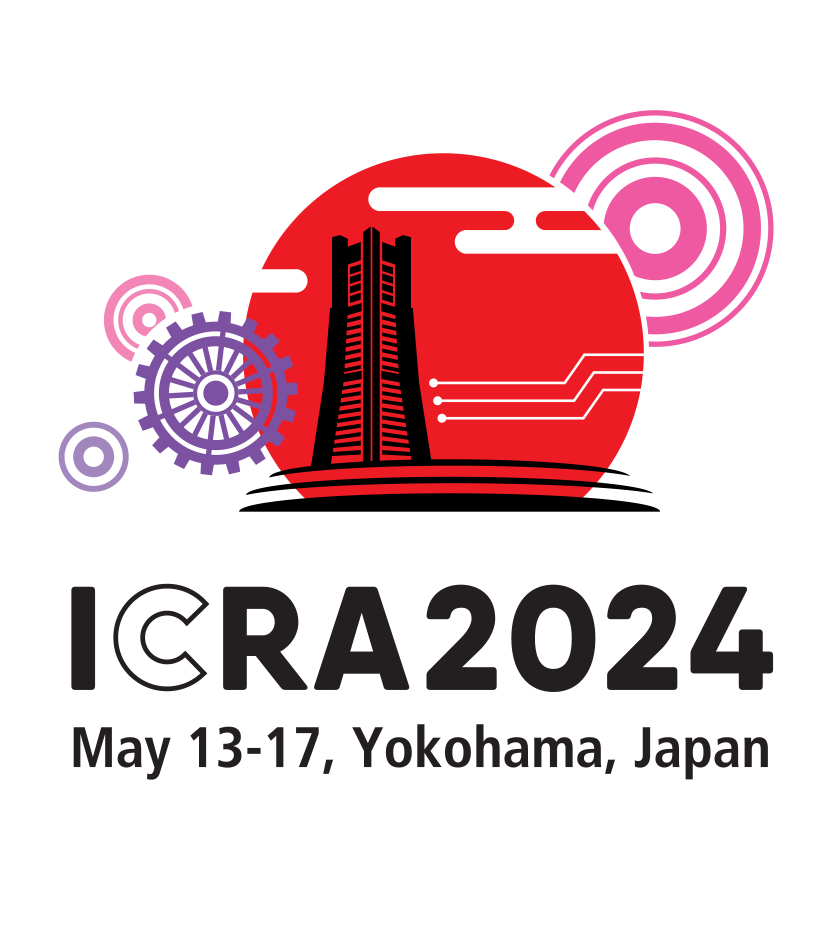Latest News
We are pleased to announce that the following IEEE Robotics and Automation Letters (RA-L) papers are now available on Xplore.
“Self-Supervised Monocular Depth Estimation with Isometric-Self-Sample-Based Learning”
G. Cha; H. -D. Jang; D. Wee
“Permanent-magnetically Amplified Robotic Gripper with Less Clamping Width Influence on Compensation Realized by a Stepless Width Adjustment Mechanism”
T. Shimizu; K. Tadakuma; M. Watanabe; K. Abe; M. Konyo; S. Tadokoro
“Robust Adaptive Ensemble Adversary Reinforcement Learning”
P. Zhai; T. Hou; X. Ji; Z. Dong; L. Zhang
“Planning Irregular Object Packing via Hierarchical Reinforcement Learning”
S. Huang; Z. Wang; J. Zhou; J. Lu
“Autonomous Dozer Sand Grading Under Localization Uncertainties”
Y. Miron; Y. Goldfracht; C. Ross; D. D. Castro; I. Klein
“Learning Stable Vector Fields on Lie Groups”
J. Urain; D. Tateo; J. Peters
“A Palm-Sized Omnidirectional Mobile Robot Driven by 2-DOF Torus Wheels”
Y. Sato; A. Kanada; T. Mashimo
“BoW3D: Bag of Words for Real-Time Loop Closing in 3D LiDAR SLAM”
Y. Cui; X. Chen; Y. Zhang; J. Dong; Q. Wu; F. Zhu
“A CoppeliaSim Dynamic Simulator for the Da Vinci Research Kit”
M. Ferro; A. Mirante; F. Ficuciello; M. Vendittelli
“Overload Clutch With Integrated Torque Sensing and Decoupling Detection for Collision Tolerant Hybrid High-Speed Industrial Cobots”
F. Ostyn; B. Vanderborght; G. Crevecoeur
“ViewBirdiformer: Learning to recover ground-plane crowd trajectories and ego-motion from a single ego-centric view”
M. Nishimura; S. Nobuhara; K. Nishino
“A Novel Metamorphic Foot Mechanism With Toe Joints Based on Spring-Loaded Linkages”
J. Sun; Z. Wang; M. Zhang; S. Zhang; Z. Qian; J. Chu
“A Framework for Robot Self-Assessment of Expected Task Performance”
T. Frasca; M. Scheutz
“SphereVLAD++: Attention-based and Signal-enhanced Viewpoint Invariant Descriptor”
S. Zhao; P. Yin; G. Yi; S. Scherer
“Towards a Discrete Snake-like Robot Based on SMA-actuated Tristable Modules For Follow The Leader Control Strategy”
B. Calmé; L. Rubbert; Y. Haddab
“Guided Spatial Propagation Network for Depth Completion”
L. Chen; Q. Li
“Real-time Hetero-Stereo Matching for Event and Frame Camera with Aligned Events Using Maximum Shift Distance”
H. Kim; S. Lee; J. Kim; H. J. Kim
“Manufacturing and Design of Inflatable Kirigami Actuators”
S. Chung; A. Coutinho; H. Rodrigue
“Hardware-Accelerated Mars Sample Localization Via Deep Transfer Learning From Photorealistic Simulations”
R. Castilla-Arquillo; C. Pérez-del-Pulgar; G. J. Paz-Delgado; L. Gerdes
“P-satI-D Shape Regulation of Soft Robots”
P. Pustina; P. Borja; C. D. Santina; A. De Luca
“Sigma-FP: Robot Mapping of 3D Floor Plans With an RGB-D Camera Under Uncertainty”
J. -L. Matez-Bandera; J. Monroy; J. Gonzalez-Jimenez
“Hybrid Learning of Time-Series Inverse Dynamics Models for Locally Isotropic Robot Motion”
T. -C. Çallar; S. Böttger
“Risk-Aware Fast Trajectory Planner for Uncertain Environments Based on Probabilistic Surrogate Reliability and Risk Contours”
G. -B. Wang
“EB-LG Module for 3D Point Cloud Classification and Segmentation”
J. Chen; Y. Zhang; F. Ma; Z. Tan
“Point Cloud Change Detection With Stereo V-SLAM: Dataset, Metrics and Baseline”
Z. Lin; J. Yu; L. Zhou; X. Zhang; J. Wang; Y. Wang
“Robot Navigation in Complex Workspaces Using Conformal Navigation Transformations”
L. Fan; J. Liu; W. Zhang; P. Xu
We are pleased to announce that the following IEEE Robotics and Automation Letters (RA-L) papers are now available on Xplore.
“Self-Supervised Monocular Depth Estimation with Isometric-Self-Sample-Based Learning”
G. Cha; H. -D. Jang; D. Wee
“Permanent-magnetically Amplified Robotic Gripper with Less Clamping Width Influence on Compensation Realized by a Stepless Width Adjustment Mechanism”
T. Shimizu; K. Tadakuma; M. Watanabe; K. Abe; M. Konyo; S. Tadokoro
“Robust Adaptive Ensemble Adversary Reinforcement Learning”
P. Zhai; T. Hou; X. Ji; Z. Dong; L. Zhang
“Planning Irregular Object Packing via Hierarchical Reinforcement Learning”
S. Huang; Z. Wang; J. Zhou; J. Lu
“Autonomous Dozer Sand Grading Under Localization Uncertainties”
Y. Miron; Y. Goldfracht; C. Ross; D. D. Castro; I. Klein
“Learning Stable Vector Fields on Lie Groups”
J. Urain; D. Tateo; J. Peters
“A Palm-Sized Omnidirectional Mobile Robot Driven by 2-DOF Torus Wheels”
Y. Sato; A. Kanada; T. Mashimo
“BoW3D: Bag of Words for Real-Time Loop Closing in 3D LiDAR SLAM”
Y. Cui; X. Chen; Y. Zhang; J. Dong; Q. Wu; F. Zhu
“A CoppeliaSim Dynamic Simulator for the Da Vinci Research Kit”
M. Ferro; A. Mirante; F. Ficuciello; M. Vendittelli
“Overload Clutch With Integrated Torque Sensing and Decoupling Detection for Collision Tolerant Hybrid High-Speed Industrial Cobots”
F. Ostyn; B. Vanderborght; G. Crevecoeur
“ViewBirdiformer: Learning to recover ground-plane crowd trajectories and ego-motion from a single ego-centric view”
M. Nishimura; S. Nobuhara; K. Nishino
“A Novel Metamorphic Foot Mechanism With Toe Joints Based on Spring-Loaded Linkages”
J. Sun; Z. Wang; M. Zhang; S. Zhang; Z. Qian; J. Chu
“A Framework for Robot Self-Assessment of Expected Task Performance”
T. Frasca; M. Scheutz
“SphereVLAD++: Attention-based and Signal-enhanced Viewpoint Invariant Descriptor”
S. Zhao; P. Yin; G. Yi; S. Scherer
“Towards a Discrete Snake-like Robot Based on SMA-actuated Tristable Modules For Follow The Leader Control Strategy”
B. Calmé; L. Rubbert; Y. Haddab
“Guided Spatial Propagation Network for Depth Completion”
L. Chen; Q. Li
“Real-time Hetero-Stereo Matching for Event and Frame Camera with Aligned Events Using Maximum Shift Distance”
H. Kim; S. Lee; J. Kim; H. J. Kim
“Manufacturing and Design of Inflatable Kirigami Actuators”
S. Chung; A. Coutinho; H. Rodrigue
“Hardware-Accelerated Mars Sample Localization Via Deep Transfer Learning From Photorealistic Simulations”
R. Castilla-Arquillo; C. Pérez-del-Pulgar; G. J. Paz-Delgado; L. Gerdes
“P-satI-D Shape Regulation of Soft Robots”
P. Pustina; P. Borja; C. D. Santina; A. De Luca
“Sigma-FP: Robot Mapping of 3D Floor Plans With an RGB-D Camera Under Uncertainty”
J. -L. Matez-Bandera; J. Monroy; J. Gonzalez-Jimenez
“Hybrid Learning of Time-Series Inverse Dynamics Models for Locally Isotropic Robot Motion”
T. -C. Çallar; S. Böttger
“Risk-Aware Fast Trajectory Planner for Uncertain Environments Based on Probabilistic Surrogate Reliability and Risk Contours”
G. -B. Wang
“EB-LG Module for 3D Point Cloud Classification and Segmentation”
J. Chen; Y. Zhang; F. Ma; Z. Tan
“Point Cloud Change Detection With Stereo V-SLAM: Dataset, Metrics and Baseline”
Z. Lin; J. Yu; L. Zhou; X. Zhang; J. Wang; Y. Wang
“Robot Navigation in Complex Workspaces Using Conformal Navigation Transformations”
L. Fan; J. Liu; W. Zhang; P. Xu
“Multi-Level Structure-Enhanced Network for 3D Single Object Tracking in Sparse Point Clouds”
Q. Wu; C. Sun; J. Wang
“Grasp Stability and Design Analysis of a Flexure-Jointed Gripper Mechanism via Efficient Energy-Based Modeling”
P. Kuresangsai; M. O. T. Cole; G. Hao
“A Markov Chain Model for Workflow Analysis in Operating Rooms”
H. Zheng; Q. Wang; J. Li
“Continuous-Time Trajectory Estimation for Differentially Flat Systems”
J. C. Johnson; J. G. Mangelson; R. W. Beard
“A Normalized Disparity Loss for Stereo Matching Networks”
S. Chen; Z. Xiang; P. Xu; X. Zhao
“Scale-Aware Squeeze-and-Excitation for Lightweight Object Detection”
Z. Xu; X. Hong; T. Chen; Z. Yang; Y. Shi
“Inflated Bendable Eversion Cantilever Mechanism With Inner Skeleton for Increased Stiffness”
T. Takahashi; M. Watanabe; K. Abe; K. Tadakuma; N. Saiki; M. Konyo; S. Tadokoro
“Point Clouds Outlier Removal Method Based on Improved Mahalanobis and Completion”
C. Qu; Y. Zhang; K. Huang; S. Wang; Y. Yang
“Haptic-Based and $SE(3)$-Aware Object Insertion Using Compliant Hands”
O. Azulay; M. Monastirsky; A. Sintov
“Template-Based Category-Agnostic Instance Detection for Robotic Manipulation”
Z. Hu; R. Tan; Y. Zhou; J. Woon; C. Lv
“Hybrid Safety Certificate for Fast Collision Checking in Sampling-Based Motion Planning”
S. Shi; J. Chen; Y. Li
“Consensus-Based Decentralized Task Allocation for Multi-Agent Systems and Simultaneous Multi-Agent Tasks”
S. Wang; Y. Liu; Y. Qiu; J. Zhou
“Generalized LOAM: LiDAR Odometry Estimation With Trainable Local Geometric Features”
K. Honda; K. Koide; M. Yokozuka; S. Oishi; A. Banno
“Simplified Configuration Design of Anthropomorphic Hand Imitating Specific Human Hand Grasps”
X. Tian; Q. Zhan; Y. Zhang; J. Zou; L. Jiang; Q. Xu
“Online and Real-Time Trajectory Generation Method for Unforeseen Events Using a Modified Spline Approach”
M. Altan Toksöz; M. Ö. Efe; V. Gazi
“Collision Avoidance Among Dense Heterogeneous Agents Using Deep Reinforcement Learning”
K. Zhu; B. Li; W. Zhe; T. Zhang
“Self-Supervised Point Cloud Understanding via Mask Transformer and Contrastive Learning”
D. Wang; Z. -X. Yang
“Forest: A Lightweight Semantic Image Descriptor for Robust Visual Place Recognition”
P. Hou; J. Chen; J. Nie; Y. Liu; J. Zhao
“Winding Through: Crowd Navigation via Topological Invariance”
C. Mavrogiannis; K. Balasubramanian; S. Poddar; A. Gandra; S. S. Srinivasa
“A Joint Acceleration Estimation Method Based on a High-Order Disturbance Observer”
J. Zhang; P. Nie; Y. Chen; B. Zhang
“Deep Reinforcement Learning for Decentralized Multi-Robot Exploration with Macro Actions”
A. H. Tan; F. P. Bejarano; Y. Zhu; R. Ren; G. Nejat
“Gaussian Mixture Midway-Merge for Object SLAM with Pose Ambiguity”
J. H. Jung; C. G. Park
“Ambiguity-Aware Multi-Object Pose Optimization for Visually-Assisted Robot Manipulation”
M. -H. Jeon; J. Kim; J. -H. Ryu; A. Kim
“Rethinking Feature Extraction: Gradient-Based Localized Feature Extraction for End-To-End Surgical Downstream Tasks”
W. Pang; M. Islam; S. Mitheran; L. Seenivasan; M. Xu; H. Ren
“Long-Term Localization Using Semantic Cues in Floor Plan Maps”
N. Zimmerman; T. Guadagnino; X. Chen; J. Behley; C. Stachniss
“Deep IMU Bias Inference for Robust Visual-Inertial Odometry With Factor Graphs”
R. Buchanan; V. Agrawal; M. Camurri; F. Dellaert; M. Fallon
“Untethered Microrobots Driven by kV-Level Capacitive Actuators via Mechanical Electrostatic Inverters”
W. Zhan; M. Qi; Z. Liu; J. Leng; H. Zhang; R. Yun; X. Yan
“HI-Net: Boosting Self-Supervised Indoor Depth Estimation via Pose Optimization”
G. Wu; K. Li; L. Wang; R. Hu; Y. Guo; Z. Chen
“Design and Modeling of a Dual-Ball Self-Balancing Robot”
X. Gao; L. Yan; Z. He; G. Wang; I. -M. Chen
“Accelerating Certifiable Estimation with Preconditioned Eigensolvers”
D. M. Rosen
“Measuring Interaction Bandwidth During Physical Human-Robot Collaboration”
A. Kalinowska; M. Schlafly; K. Rudy; J. P. Dewald; T. D. Murphey
“A Novel Variable-Diameter-Stiffness Guiding Sheath for Endoscopic Surgery”
H. Wang; S. Zuo
“IC-GVINS: A Robust, Real-Time, INS-Centric GNSS-Visual-Inertial Navigation System”
X. Niu; H. Tang; T. Zhang; J. Fan; J. Liu
“Learning Efficient Policies for Picking Entangled Wire Harnesses: An Approach to Industrial Bin Picking”
X. Zhang; Y. Domae; W. Wan; K. Harada
“GMF: General Multimodal Fusion Framework for Correspondence Outlier Rejection”
X. Huang; W. Qu; Y. Zuo; Y. Fang; X. Zhao
We are pleased to announce the 19th IEEE International Conference on Advanced Robotics and Its Social Impacts (ARSO 2023), which will take place in Berlin, Germany on 5 – 7 June 2023, in conjunction with ICRA 2023. Contributions for papers and organized sessions are now open (accepted papers will be published in the conference proceedings and on IEEE Xplore).
Please note that the organized session proposal deadline has been extended to December 14th.
Summary
Advanced robots are expected to enter in promising applications in our future society and bring substantial impacts. The increasing implementation of AI-based components even broadens their fields of application. To ensure that these impacts are positively reflected, we must now extend views not only on technical aspects but also on social challenges that we might face, which relate to issues such as safety, regulation, ethics, human factors, and philosophy.
Topics of Interest
- Human-robot interaction in physical & psychological aspects
- Safety standards for advanced robots & autonomous systems
- Legal and ethical issues for advanced robots
- Impact of robotics on society, e.g. robot business, marketing & economic impact
- Robotics for sustainability, climate change or civil aid
- Advanced industrial robots for future manufacturing
- Healthcare & medical applications
- Rehabilitation and transfer robotics
- Service & assistance applications
- Entertainment & education robotics
- Robotics & autonomous driving
- Bio-inspired robotics
- Soft and wearable robotics
Check out our website for more details.
Key Dates and Deadlines
- Organized session proposal deadline: 14 Dec 2022
- Notification of Organized Session Acceptance: 15 Dec 2022
- Initial paper submission deadline: 31 Jan 2023
- Notification of Paper Acceptance: 1 April 2023
- Final paper submission deadline: 30 April 2023
 |
Recognizing the achievements of its members is an important part of the mission of IEEE. Each year, following a rigorous evaluation procedure, the IEEE Board of Directors selects a group of members for elevation to IEEE Fellow. The IEEE Fellow is the highest grade of membership in IEEE. Less than 0.1% of voting members are selected annually for this member grade elevation. It is recognized by the technical community as a prestigious honor and an important career achievement. The following RAS members have been elevated to IEEE Fellow, effective 1 January 2023. |
Aaron M. Dollar - Yale University, New Haven, (CT) USA
for contributions to dexterous grasping and manipulation
Dario Floreano - Swiss Federal Institute of Technology, Lausanne, Switzerland
for contributions to bio-inspired drone development and evolutionary robotics
Antonio Franchi - University of Twente, Enschede, Netherlands
for contributions to modelling, design, and control for aerial and distributed robotic systems
Kensuke Harada - Osaka University, Toyonaka, Japan
for contributions to whole-body manipulation for biped humanoid robots
Alois C. Knoll - Institut Fuer Informatik VI, Garching, Germany
for contributions to Human-Robot Interaction and Neurorobotics
Jana Kosecka - George Mason, University Annandale, (VA) USA
for contributions to robust embodied vision systems and semantic modeling in robotics
Torsten Kroeger – Intrinsic, Menlo Park, (CA) USA
for contributions to real-time motion planning
Cecilia Laschi - National University of Singapore
for contributions to soft robotics
Karon Maclean
University of British Columbia, Vancouver, (BC) Canada
for contributions to the design of haptic communication
Arianna Menciassi - Scuola Superiore Sant'Anna, Pontedera, Italy
for contributions to the development of robots for minimally invasive surgery
Kazuhiro Nakadai - Tokyo Institute of Technology, Japan
for contributions to robot audition and computational auditory scene analysis
Christian Ott - German Aerospace Center, Wessling, Germany
for contributions to torque-control theory using passive joint elasticity and the whole-body control of humanoids
Jose A. Santos-Victor - Instituto Superior Tecnico, Lisbon, Portugal
for contributions to biologically inspired cognitive vision and humanoid robotic systems
Birgit Vogel-Heuser - Technische Universitaet Muenchen, Garching, Germany
for contributions to evolvable, adaptable field-level automation architectures for manufacturing systems and logistics
YuMingZhang - University of Kentucky, Lexington, (KY) USA
for contributions to robotized welding manufacturing through machine-vision-based intelligence
Li Zhang - The Chinese University of Hong Kong, Shatin Hong
for contributions to micro-/nanorobot swarms and platforms for translational biomedicine
2023 RAS Fellows Evaluated by Other IEEE Societies
Evaluated by the Computational Intelligence Society
Hong Wang - Oak Ridge National Laboratory, Farragut, (TN) USA
for contributions to learning control and diagnosis for complex dynamical systems
Evaluated by the Computer Society
Hong Chen - Tongji University, Shanghai, China
for contributions to predictive control and applications in automotive systems
Evaluated by the Computer Society
Dimos Dimarogonas - KTH Royal Institute of Technology, Stockholm, Sweden
for contributions to distributed and hybrid control of multi-agent systems
Evaluated by the Computer Society
Kingsley Fregene - Grand Prairie, (TX) USA
for contributions to the autonomous control of unmanned vehicles
Evaluated by the Computer Society
Abdelhamid Tayebi - Lakehead University, Thunder Bay, Canada
for contributions to the control of unmanned aerial vehicles and learning-based control for robot manipulators
Evaluated by the Engineering in Medicine and Biology Society
He Huang - North Carolina State University, Raleigh, (NC) USA
for contributions in control development in rehabilitation robotics
Evaluated by the Industrial Electronics Society
Youmin Zhang - Concordia University, Montreal, Canada
for contributions to fault diagnosis and fault-tolerant control systems
Evaluated by the Systems, Man, and Cybernetics Society
Daoyi Dong - Australian Defence Force Academy, Canberra, Australia
for contributions to quantum systems control and reinforcement learning
Evaluated by the Signal Processing Society
Alfred Bruckstein - Technion International, Haifa, Israel
for contributions to signal representation and swarm robotics
More About IEEE Fellows
IEEE Fellow is a distinction reserved for select IEEE members. The honor is conferred by the Board of Directors upon a person with an extraordinary record of accomplishments in any of the IEEE fields of interest.
If you know of an IEEE colleague who is a Senior Member or Life Senior Member in good standing, has completed five years of service in any grade of IEEE Membership, and has made an outstanding contribution to the electronic or electrical engineering profession, you can nominate this person in one of four categories:
- Application Engineer/Practitioner
- Educator
- Research Engineer/Scientist
- Technical Leader
Additional information about the IEEE Fellow program, and a list of RAS Fellows is available here.
We are pleased to announce that a new issue of IEEE Robotics and Automation Letters (Volume 8, Issue 1, January 2023) is now available on IEEE Xplore. Check it out!
We are proud to announce the IEEE International Conference on Automation Science and Engineering (CASE) to be held in Auckland, New Zealand on 26–29 August 2023. CASE is the flagship automation conference of the IEEE Robotics and Automation Society (RAS) and constitutes the primary forum for cross-industry and multidisciplinary research in automation. Its goal is to provide broad coverage and dissemination of foundational research in automation among researchers and practitioners.
The theme of CASE 2023 is Automation for a Resilient Society. For more information, please check out our flyer or visit our conference website.
Key Dates and Deadlines
- Special session proposal submissions due 15 February 2023
- Regular and special session full paper submissions due 1 March 2023
- Workshop proposal submissions, industry paper submissions, and presentation-only paper submissions due 1 April 2023
- Paper acceptance notification 15 May 2023
- Final paper submission due 15 June 2023
- Author registration due 15 June 2023
- Conference held from 26–29 August 2023
Haptic sensations are a fundamental component of the user’s immersive experience when interacting in Virtual/Augmented/Mixed/eXtended Realities (VR/AR/MR/XR). In the last few years, we have witnessed the rapid development of many innovative devices and original techniques for providing haptic sensations, e.g., using force feedback, mid-air interfaces, props, or exploiting perceptual phenomena with cross-modal effects such as pseudo-haptics. While increasingly immersive and realistic experiences have developed at a fast pace, the emergence of a metaverse proposes new use cases where prolonged utilisation and social interactions become more frequent and effective than reality. This change in direction presents the haptics community with new challenges and opportunities. To that end, the goal of this Special Issue is to present innovative cutaneous and tactile technologies as well as their use towards the metaverse vision.
Key Dates and Deadlines
- Submission deadline: 31 January 2023
- First decision sent to authors: approximately 3 months after submission
- Final decision sent to authors: approximately 6 months after submission
- Final publication material due from authors: approximately 7 months after submission
See here for more details.
Motivation
Safety-critical tasks are very common in real-life robotic applications. Tasks are considered safety-critical when, for example, robots act in close proximity to humans, especially when they have limited knowledge about the environment.
The proposed SI hinges on contributions that advance the field of learning for robust and safe control. Our interest encompasses both theoretical and empirical results which aim to show that combining machine learning strategies with model-based controllers is the key to developing stable and robust autonomous systems that are capable of adapting to dynamic environmental changes, are resilient to external disturbances, and unmodelled dynamic effects, and that behave in accordance to the theoretical guarantees of controllers.
See our website for more information.
Key Dates and Deadlines
- Submission deadline: March 31, 2023
- Final Publication: September 27, 2023
Motivation
Physical Human-Robot Interaction (pHRI) is of great interest in robotics. Currently, we have good working knowledge about our engineered robots, but we still lack a deeper understanding about human behavior, and how to effectively use it for real-time reactive robot behavior in the context of pHRI. This understanding is crucial to evolve the pHRI paradigms into safer and more effective human-robot interactions. Therefore, progress and innovations in human modelling are necessary to significantly improve how human operators physically collaborate with Cobots, prostheses, exoskeletons, and other robotic devices.
This special issue aims to stimulate discussion and promote collaboration between the communities of robotics and biomechanics. Contributing authors will investigate the state of the art of human modelling and present modern human modelling techniques and tools to advance research in pHRI. The latest high-quality research results from both biomechanists and roboticists will be collected and presented.
Please see our website for more details.
Key Dates and Deadlines
- Submission deadline: February 1, 2023
- Final Publication: August 9, 2023
We are pleased to invite you to participate in the mc_rtc tutorial organized at the IEEE/RAS Humanoids 2022 conference.
mc_rtc is an open-source application framework for robotics developed jointly by the CNRS-AIST Joint Robotics Laboratory (JRL) in Japan and the CNRS-UM Interactive Digital Human (IDH) in France. It has been used extensively over the past few years and has allowed for the efficient realization of many complex demonstrators:
- Industrial applications of humanoid robots (e.g., COMANOID)
- Humanoids car driving (e.g., the DARPA Robotics Challenge)
- Human-Robot interaction on the Pepper platform (SOFTBANK Robotics)
- Embodiment for service robotics (Avatar X-Prize)
- and many others that will be showcased using simpler robotic arms
mc_rtc is now used in many teams across the world and has been deployed on many humanoid platforms—HRP robots, Nao, Pepper, REEM-C and Talos—as well as on non-humanoid robots such as Panda, Kuka or UR robots.
With the release of the 2.0 version, the framework is now more extendable than ever to conduct your own robotics research with the tools provided by the framework.
In this tutorial, we will introduce the capabilities of the framework through the implementation of an example scenario that requires the combination of visual-servoing, force sensing, and walking. The scenario is representative of the complexity of programming humanoid robots and will highlight the power of mc_rtc in easing this process.
The tutorial will be held on 28 November 2022 9am–5pm Japan time (GMT+9) in room B3 at the Okinawa Convention Center. See the Humanoids 2022 website for more information.
Online Attendance
Online attendance is possible. Please contact pierre.gergondet@gmail.com and we will send you a tele-conference invitation before the tutorial.
Click here to learn more about the tutorial; to learn more about mc_rtc, click here. We look forward to seeing you there in person or online.
We cordially invite you to submit contributions to the fourth edition of the focused section on T-MECH/AIM emerging topics. This focused section is intended to expedite publication of novel and significant research results, technology, and/or conceptual breakthroughs on emerging topics within the scope of T-MECH; our aim is to provide the mechatronics community with rapid access to state-of-the-art T-MECH publications.
The submission site is now open; the deadline for submissions is 6 January 2023.
For more details, click on the links above and check out our flyer.
The IEEE Robotics and Automation Society is most pleased to announce that Carlotta Berry has been selected as the recipient of the prestigious 2023 Undergraduate Teaching Award “for contributions to multidisciplinary robotics education and leadership in creating a national platform to diversify STEM.”
 |
Carlotta Berry has a passion for increasing diversity in engineering. She is utilizing robotics and engineering education, as well as human-robot interaction research to bring STEM to diverse populations. She has built several organizations that reach out to women and marginalized and minoritized populations and encourage them to pursue STEM degrees. She founded the Rose Building Undergraduate Diversity (ROSE-BUD) program to increase the participation of underprivileged and underrepresented students in electrical and computer engineering. Berry worked with colleagues worldwide to start the nonprofits Black in Engineering and Black in Robotics that build community and advocate for diversity, equity, inclusion, and justice.
An IEEE Senior Member, Berry is the Rose Hulman Institute of Technology Lawrence J. Giacoletto Endowed Chair and professor for Electrical and Computer Engineering, Indiana, USA. |
More About the IEEE Undergraduate Teaching Award
 Sponsored by the IEEE Education Society, the IEEE Undergraduate Teaching Award was established by the Board of Directors in 1990 to honor teachers of electrical and electronics engineering and the related disciplines. The award consists of a bronze medal, certificate, and cash honorarium. In the evaluation process, the following criteria are considered: excellence in teaching undergraduate students; creative development of the undergraduate curriculum; authorship of course materials for undergraduate students; involvement with undergraduate students through activities such as advising, project supervision, faculty counseling or advising for student organizations; attracting students to engineering and scientific profession; and the quality of the nomination.
Sponsored by the IEEE Education Society, the IEEE Undergraduate Teaching Award was established by the Board of Directors in 1990 to honor teachers of electrical and electronics engineering and the related disciplines. The award consists of a bronze medal, certificate, and cash honorarium. In the evaluation process, the following criteria are considered: excellence in teaching undergraduate students; creative development of the undergraduate curriculum; authorship of course materials for undergraduate students; involvement with undergraduate students through activities such as advising, project supervision, faculty counseling or advising for student organizations; attracting students to engineering and scientific profession; and the quality of the nomination.
A list of past recipients can be found here.
 |
The 2022 edition of Robohub’s annual "50 women in robotics you need to know about" has honored six members of the IEEE Robotics and Automation Society, from all three RAS geographical regions!
Congratulations to Women in Robotics for the 10th anniversary of this important recognition for the many amazing women in robotics. |
The following IEEE Robotics and Automation Society women are included in this year's list:
- Kathy Colabaugh, IEEE Robotics and Automation Society, USA
- Jeanne Dietsch, Granite State Matters, USA
- Xiaoou Li, Center for Research and Advanced Studies of the National Polytechnic Institute of Mexico, Mexico
- Pauline Pounds, University of Queensland, Australia
- Karinne Ramirez-Amaro, Chalmers University of Technology, Sweden
- Teresa Vidal Calleja, University of Technology Sydney, Australia
Check out the full article to read more about all these impressive women.
Agricultural production is a key economic activity providing a growing world population with resources like food, fibers, fuels, and chemical basic components. Despite a growing world population, labour participation in agricultural production is declining and technology is needed to support farmers in their work. Technologies like sensing, data, artificial intelligence, and robotics will become more and more important. This special issue addresses technological progress in robotics and intelligent machine systems for smart agricultural production. Papers could address any part of the agricultural value chain including plant and animal breeding, through on-farm production, to post-harvest storage, logistics, packaging, and food processing. Besides on-farm food, feed and fiber production, off-farm production can be considered like fishery, forestry and urban landscaping and maintenance.
More information can be found here.
Deadline for submission: February 1, 2023
Special issue publication date: December 2023
Compliant Mechanisms (CMs), along with Soft Robotic devices formed therewith, may be defined as engineering systems achieving force and motion transmission via the deflection of flexible members. CMs have increasingly gained a strong foothold in the scientific arena owing to their hinge-less nature, shock resistance, potential single-piece manufacturability, safety in human-machine interaction, minimal maintenance requirements, and adaptability to work in unstructured environments. In parallel, current advances in the production of inherently compliant sensory-motor apparatus, as well as progress in the development of robust control methods, are paving the way to practical CM adoption in a large variety of engineering fields, including healthcare, manufacturing, inspection/maintenance, and agrifood. However, by embracing large deflections as a requirement rather than a design flaw, the conception and the subsequent physical prototyping of optimal CMs requires: i) material models capable of dealing with finite deformations, time-dependent phenomena, and uncertain constitutive parameters; ii) design tools allowing to simulate the behaviour of highly deformable structures; iii) reliable, possibly affordable, manufacturing methods; iv) more powerful adaptive learning and control techniques. Within this scenario, this focused section aims at providing an opportunity for material scientists, robotic/control engineers, and practitioners from academia or industry to present the latest theoretical and technological achievements in Complaint Mechanisms for Mechatronics. Focus shall be placed on transdisciplinary methodological frameworks, hardware development for real-world applications and out-of-lab experiments. Papers presenting newly emerging fields (such as robotic programmable materials) are also especially welcome.
Important Dates
- 1 March 2023 - Submission deadline
- December 2023 – Publication
More details available here: http://www.ieee-asme-mechatronics.info/focus-sections/
Rus made the design of distributed noisy networked robot systems more efficient, an essential step in the controllability of fleets of autonomous vehicles.
The IEEE Robotics and Automation Society is most pleased to announce that Daniela Rus has been selected as the recipient of the prestigious 2023 IEEE Robotics and Automation Award. Professor Rus was selected “for pioneering contributions to the design, realization, and theoretical foundations of innovative distributed, networked autonomous systems.” Professor Rus will receive the award at the 2023 International Conference on Robotics and Automation (ICRA), which will be held in London, UK from 29 May–2 June 2023.
 |
Daniela Rus has made fundamental contributions to the science and engineering of autonomy, with a special focus on robotic interactions. Her work is enabling a future in which machines are pervasively integrated into the fabric of life. She has significantly advanced the ability of machines to reason, learn, and adapt to complex tasks in human-centered environments. The applications of her work include transportation, manufacturing, agriculture, underwater exploration, smart cities, and in-home tasks like cooking. Her recent work focused on computational design and fabrication of robots, as well as safe learning-based control for adaptation to changing conditions place her at the leading edge of her field. An IEEE Fellow, Rus is the Andrew and Erna Viterbi Professor and director of CSAIL, Massachusetts Institute of Technology, Cambridge, Massachusetts, USA. |
About the IEEE Robotics and Automation Technical Field Award
The IEEE Robotics and Automation Technical Field Award (TFA) was established in 2002 by the IEEE Board of Directors. This TFA is presented for contributions in the field of robotics and automation; it is sponsored by the IEEE Robotics and Automation Society.
More information and a list of past recipients can be found here.
Dear female roboticists worldwide:
We are delighted to announce that applications for the Dr. Kanako Miura Award for Humanoids 2022 are now open.
What is the Kanako Miura Award?
This is a travel support award to the IEEE-RAS International Conference on Humanoid Robots established by the IEEE-RAS Technical Committee on Humanoid Robotics in recognition of Dr. Kanako Miura’s contributions to the field. Candidates for the award are doctoral and master course female students entering the field of robotics research.
Dr. Miura (1976-2013) worked at the National Institute of Advanced Industrial Science and Technology (AIST) in Japan. Her expertise was in biomechanics, tele-communication, and human-like motion synthesis on humanoid robots. She continued her research in advanced biped locomotion at MIT. In the spring of 2013, she passed away in a tragic accident. The community was deeply saddened by this event. This award program was created to memorialize both her achievements and her friendship to so many in our community.
How to Apply
Any female students attending Humanoids 2022 can apply for this award by filling out this form and emailing it to humanoids2022kmaward(at)googlegroups.com; please use “Kanako Miura award application” in your subject line. Please note that the application deadline has been extended to November 25, 2022.
Decisions will be announced shortly after the deadline. Awardees will receive their awards during the award ceremony at the conference.
The Technical Committee on Model-Based Optimization for robotics is excited to kick off a new virtual seminar series.
We'll be getting started with a talk from Zac Machester of CMU at 10AM EST on Friday November 18th. It should be an engaging start to the series, and we hope to see many of you there!
Speaker: Zac Manchester
Title: Composable Optimization for Robotic Motion Planning and Control
Date: Friday, November 18th
Time: 10-11 AM EST (GMT -05:00)
Link:https://columbiauniversity.zoom.us/j/91247893326?pwd=L2JWU21aQzc4cU1ZQklEb0QrWGQvdz09
Please see attached document for details on the speaker and the abstract.
Stay tuned for more details to come on other TC seminars that we'll be holding this spring. Our rough schedule is below. We're looking forward to this fantastic slate of speakers to help keep everyone in touch across the long gap in conferences until ICRA.
January: Carlos Mastalli and Majid Khadiv
February: Justin Carpentier
March: Nathan Ratliff
April: Hae-Won Park and Ioannis Havoutis
Please don't hesitate to reach out if you have any questions at tc.opt.rob@gmail.com or visit out website https://www.ieee-ras.org/model-based-optimization-for-robotics.
Important Dates
Guest Editors
Don't wait! The Award Nomination Deadline is 1 September 2022

Who are Leaders in the robotics and automation field? Who should be honored with a prestigious IEEE RAS Award? Consider nominating them! But hurry, the deadline for IEEE Robotics & Automation Society Award nominations is midnight (US EST) 1 September 2022.
Details for each award, including eligibility, nomination requirements and lists of previous recipients, may be found here:
www.ieee-ras.org/awards-recognition/society-awards








